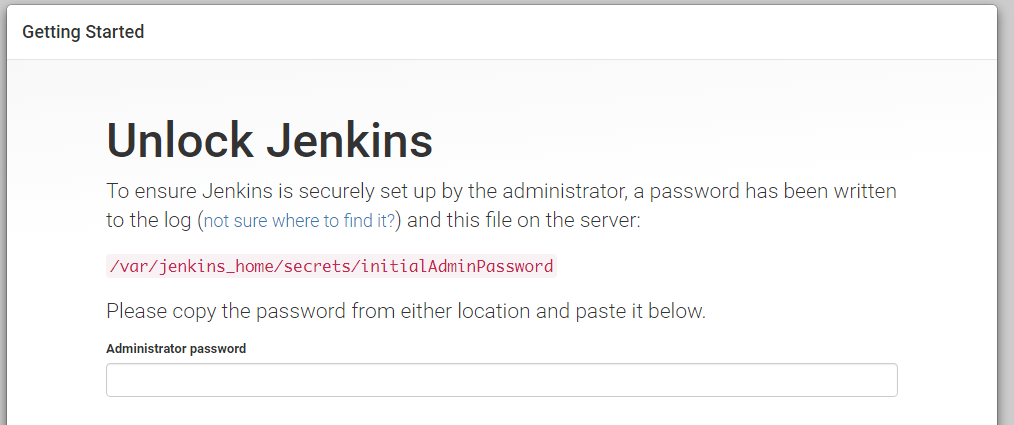
- #JENKINS PIPELINE DOCKER RUN AS ROOT INSTALL#
- #JENKINS PIPELINE DOCKER RUN AS ROOT PATCH#
- #JENKINS PIPELINE DOCKER RUN AS ROOT CODE#
- #JENKINS PIPELINE DOCKER RUN AS ROOT DOWNLOAD#
OpenShift Container Platform Jenkins Client Plugin Synchronizing secrets into Jenkins credential entries OpenShift builds to the Jenkins git plugin.

Integration with the Jenkins git plugin, which passes commit information from Pipeline visualization in the OpenShift web console. This ensures that the image can be reproduced precisely.ĭynamic creation of slave pod templates from ImageStreams, ImageStreamTags, or ConfigMaps. Produced images can include all inputs including specific versions of build tools and dependencies. S2I encourages a shared ecosystem of images where you can leverage best practices for your applications.
#JENKINS PIPELINE DOCKER RUN AS ROOT INSTALL#
S2I prevents developers from performing arbitrary yum install type operations, which could slow down development iteration, during their application build. S2I restricts the operations performed as a root user and can run the scripts as a non-root user. This can be exploited by a malicious user because the entire Docker build process is run as a user with Docker privileges.

#JENKINS PIPELINE DOCKER RUN AS ROOT PATCH#
S2I allows you to rebuild the application consistently if an underlying image needs a patch due to a security issue.īy restricting build operations instead of allowing arbitrary actions, as a Dockerfile would allow, the PaaS operator can avoid accidental or intentional abuses of the build system.īuilding an arbitrary Dockerfile exposes the host system to root privilege escalation.
#JENKINS PIPELINE DOCKER RUN AS ROOT DOWNLOAD#
In addition, S2I scripts can be written to re-use artifacts stored in a previous version of the application image, rather than having to download or build them each time the build is run. With S2I, the assemble process can perform a large number of complex operations without creating a new layer at each step, resulting in a fast process. Note that, currently, S2I relies on tar to inject application source, so the image needs to be able to process tarred content.
#JENKINS PIPELINE DOCKER RUN AS ROOT CODE#
S2I scripts can be written to inject application code into almost any existing Docker-formatted container image, taking advantage of the existing ecosystem. Injecting content into a volume by using ConfigMaps Setting command-line arguments for container commands with ConfigMaps Populating environment variables in containers by using ConfigMaps Adding certificate authorities to the cluster Setting up additional trusted certificate authorities for builds Build controller configuration parameters Restricting build strategies to a user within a project Restricting build strategies to users globally Disabling access to a build strategy globally Docker builds using Satellite subscriptions Adding Satellite configurations to builds Running builds with Satellite subscriptions Adding Subscription Manager configurations to builds Adding subscription entitlements as a build secret Creating an ImageStreamTag to the Red Hat Universal Base Image Using the CLI to set post commit build hooks Accessing BuildConfig logs for a given version build Setting environment variables when starting a build Mapping between BuildConfig environment variables and Jenkins job parameters Using environment variables for pipeline builds Providing the Jenkinsfile for pipeline builds Understanding OpenShift Container Platform pipelines Using environment variables for custom builds Creating images from source code with s2i Ignoring Source-to-Image (S2I) source files Using Source-to-Image (S2I) BuildConfig environment Using Source-to-Image (S2I) environment files Source-to-Image (S2I) environment variables Overriding Source-to-Image (S2I) builder image scripts Performing Source-to-Image (S2I) incremental builds Using build fields as environment variables Using Docker credentials for private registries Creating a basic authentication secret with a. Creating a basic authentication secret with a CA certificate

Creating a SSH-based authentication secret with a. Creating a secret from source code trusted certificate authorities Creating a secret from source code SSH key authentication Creating a secret from source code basic authentication

Automatically adding a source clone secret to a build configuration


 0 kommentar(er)
0 kommentar(er)
